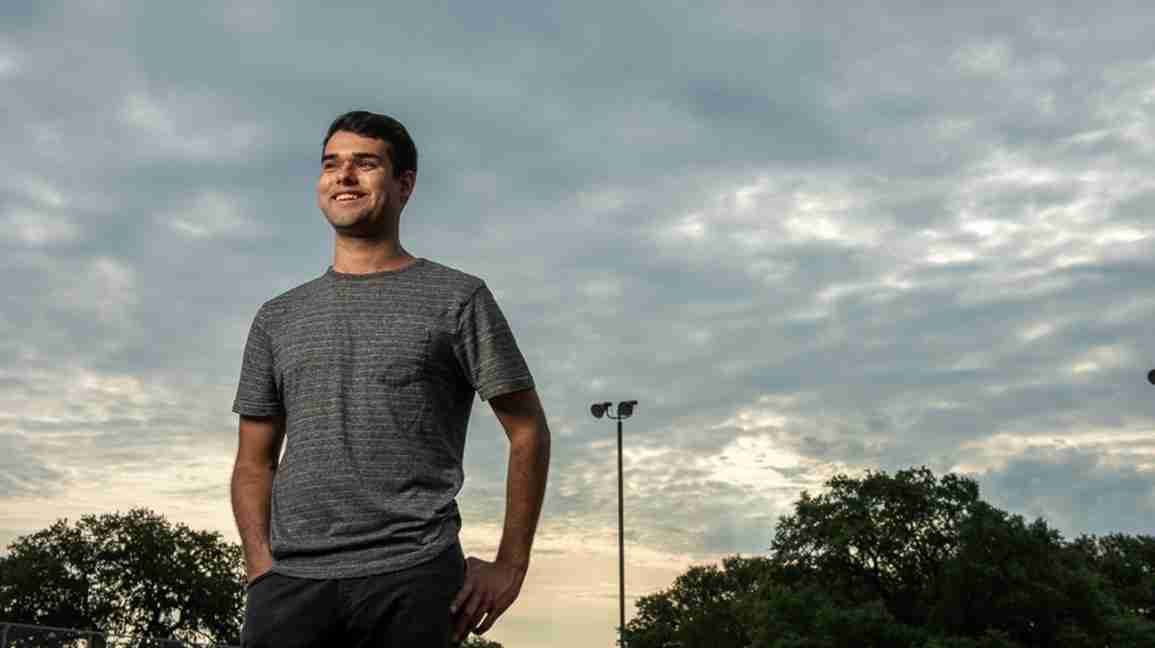
Can teens change the world? Alexander Mancevski thinks so.
Inspired by a middle school student with type 2 diabetes in his community, Mancevski was only in 10th grade when he founded a nonprofit called Health Through Science that works to eradicate preventable diseases.
Mancevski admits it took persistence for his work to be taken seriously by community leaders at such a young age, but he proved himself quickly.
In just 1 year, the organization grew from 30 student volunteers to 150 individuals, providing mentorship to 1,500 elementary school students in and around Austin, Texas.
The 19-year-old isn’t finished yet. This fall, Mancevski is entering his junior year at Harvard University, where he studies biochemistry. He plans to pursue a career in medicine.
“Health Through Science has inspired me to become a medical doctor who not only treats patients, but also inspires communities to create programs to prevent illness and disease,” he says.
We asked Mancevski about his studies, goals, and obstacles. Here’s what he had to say.
This interview has been edited for brevity, length, and clarity.
What prompted you to get into your field of study?
Healthy living became my passion in fifth grade, when I met a middle school student with type 2 diabetes (T2D). I wanted to help him, so I did research on pediatric T2D and found out that it is a preventable disease.
What’s more, I learned that virtually every elementary school in Austin has one or more students who have T2D. I had to do something about it.
I became a health exhibitor at school and community events. In 5 years, I reached more than 2,000 students and families.
I later envisioned the Health Through Science (HTS) Initiative, an organization that would teach health awareness through science curriculum during school hours.
Sixteen elementary schools with at-risk students ultimately invited HTS to do health awareness presentations.
Please tell us about the work you’ve already done as well as your goals for the future.
I founded HTS, which challenged me to hone my leadership skills. HTS promoted science fair projects focused on healthy living, and our volunteers guided children to successfully complete their research.
When I was 17, my school counselor recommended me for the Gloria Barron Prize for Young Heroes. I used that award to partially fund a monetary prize for a new HTS award at the regional science fair.
My next goal is to start health awards in other regions, like the Alamo region, which includes San Antonio.
This summer, I’m continuing research I started at the Harvard Radcliffe Institute for Advanced Study in September 2018. I’m also doing research through the David Rockefeller Center for Latin American Studies.
I had planned to travel and do research in Chile, but instead, I’ll work remotely with the school of medicine at the Universidad Católica de Chile, developing a framework for the evaluation of collaborative mental healthcare that focuses on integrating mental healthcare into primary care.
What obstacle have you encountered as you’ve moved toward your goals?
The main obstacle has been organizations that don’t believe in the power and determination of tweens and teens.
I was a 10-year-old healthy living exhibitor. I believe that fifth grade is a good time to start promoting healthy living leadership because [young people] can hone their communication and organizational skills and learn to deal with authorities with whom they have to collaborate.
Early on, I would just say to myself that if so and so would just give me 5 minutes, that person would see that I was serious and capable.
I had to be very persistent and beg authorities to set aside some time each week to meet a starry-eyed teen with big ideas on how to change the world.
We at HTS know that there are many would-be teen leaders. HTS empowers them by eliminating obstacles, providing mentors, and allowing them to be the best version of themselves.
What message would you like to give to children with type 2 diabetes?
The main message to the audience should be that T2D or their weight or their circumstances don’t define them.
T2D isn’t a person’s problem — it’s a community and societal problem. Only comprehensive strategies will really resolve T2D.
How can we expect kids to eat vegetables when they live in a food desert? How can we expect minority kids to be active, walk, or run when police are called if somebody sees kids run in a low-income neighborhood?
I would like to tell them that T2D is a disease that affects many Hispanic families, including mine. My paternal grandfather and my maternal grandmother both had T2D, which I had not known before asking.
As I learned more, I realized that T2D didn’t have to be my fate. I read that it can be improved and managed with simple nutritional changes, one at a time.
I’d also like to provide information that being active is a joyous pursuit, not a tedious, boring chore.
Why are issues related to food and nutrition important to you?
Food deserts and the unavailability of healthy food in low-income areas are important issues. How can we ask people to choose healthy food if there’s none in their neighborhood?
People can either buy [one meal’s worth] of fresh produce for $4 or get [1 week’s worth of] unhealthy canned or packaged food for the same price. We can’t be surprised that low-income parents choose the latter.
Inequalities prevent parents from making healthy lifestyle choices and buying nutritious food. I know that parents want the best for their kids. They want their kids to succeed and be happy.
However, I don’t think the current strategies are addressing all parents to prevent T2D before it happens. Nobody lives in a vacuum, so parents can only make healthy choices for their children if society provides the information and the resources.
Since food is a big part of your work promoting healthy living, can you please share your favorite food memory?
My favorite food memory was watching my mom prepare my favorite Peruvian dish, arroz con pollo (rice with chicken) when I was a toddler. Peruvian dishes take a while, but also teach delayed gratification.
In first grade, I learned that brown rice is a healthier substitute for white rice and that every meal must have vegetables. Our homework was to share this at home, and I did.
I was elated when my mom followed my suggestion and created brown rice with chicken and vegetables.
I learned that a healthier dish is equally delicious, and I felt empowered that I could be an agent of change within my family.
Joni Sweet is a freelance writer who specializes in travel, health, and wellness. Her work has been published by National Geographic, Forbes, the Christian Science Monitor, Lonely Planet, Prevention, HealthyWay, Thrillist, and more. Keep up with her on Instagram and check out her portfolio.



